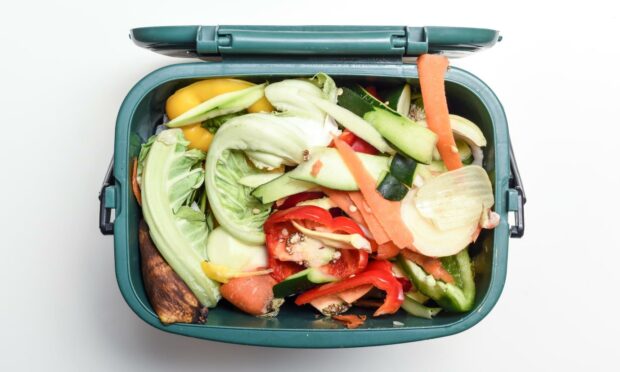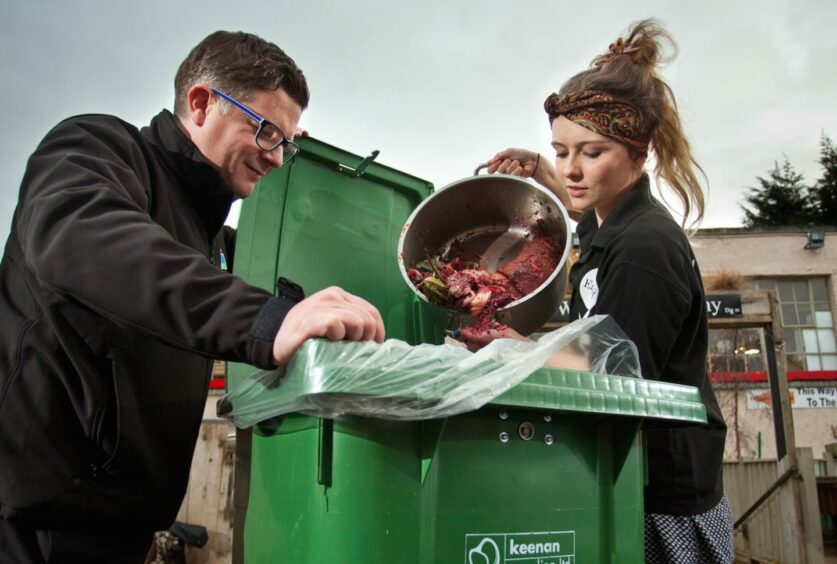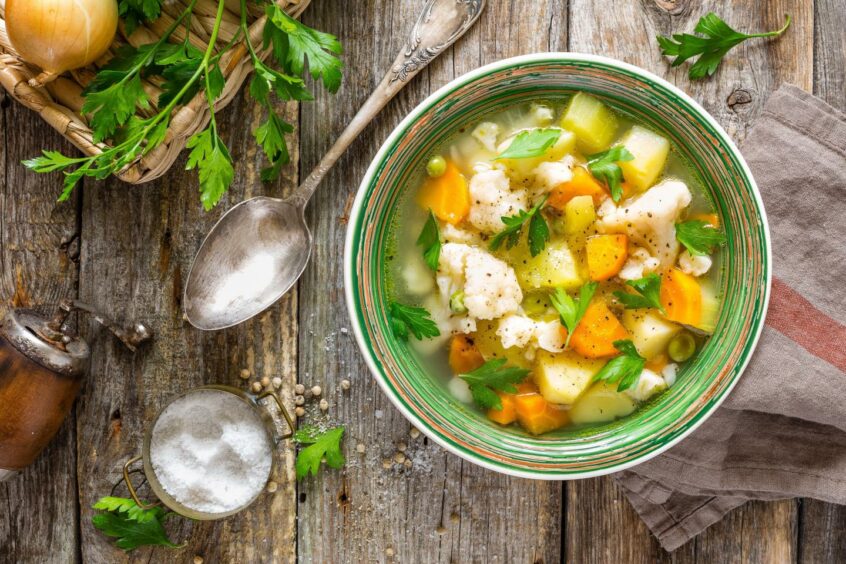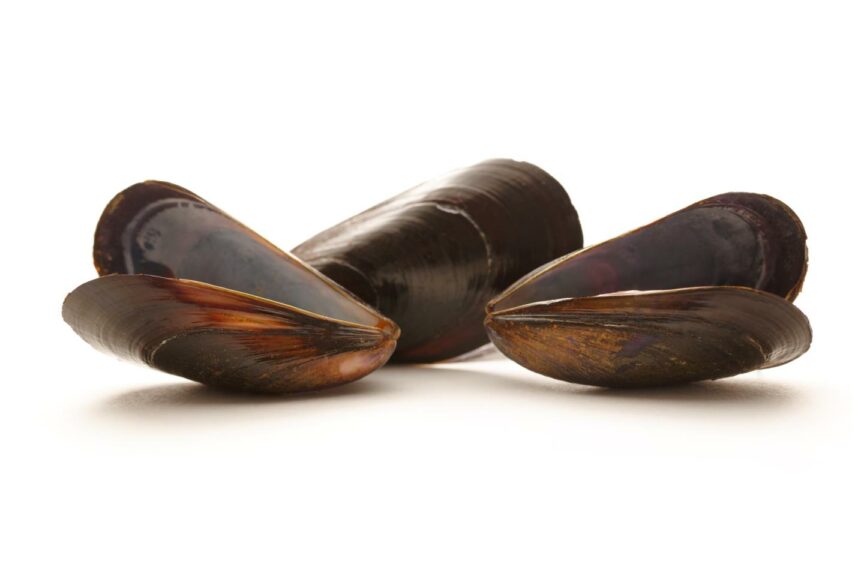Every day in the UK we waste 20 million slices of bread, 280 tonnes of poultry, four million tatties and much, much more.
It’s not just us who are guilty. About a third of all the world’s food goes to waste, and producing, transporting and letting that food rot releases up to 10% of global greenhouse gases.
If food waste were a country, it would have the third-biggest carbon footprint after the US and China, according to the UN’s Food and Agriculture Organisation.
We need to get a grip on the food we throw away, and Andrew Gerlach from Aberdeen’s Keenan Recycling has some tips on how to get the most from your doorstep food caddy.
Three things you shouldn’t put in your food waste bin
Metal and glass
“This is a big no-no,” said Andrew, “but it’s surprisingly common.
“Perhaps people think that because metal and glass are recyclable that it’s ok to chuck it in along with your fruit and veg scraps, but it’s not.”
The reason for this is that metal and glass are recycled at different facilities from food waste.
Any non-food waste items which end up at the Keenan Recycling plant in New Deer sadly end up in landfill. So you’re better off putting them in the correct recycling box.
Meat joints
Large bones are extremely strong and can be difficult to recycle.
This isn’t because they won’t rot or breakdown, but because they can damage machinery which is used in the process.
“Big knuckle joints and the like can damage the equipment which means we have to stop processing,” said Andrew.
“Once its broken it creates a massive backlog of food waste.”
However Andrew is keen to point out that most regular kitchen meat waste is fine, only large joints from butchers like knuckles and shoulder blades tend to be an issue.
Plastic bags
Plastic bags have truly gotten everywhere, including muddled up with our food waste.
“Black bags in particular are a problem,” Andrew said, explaining that they are not recyclable and not see-through, so staff at recycling centres are unsure what is inside.
There is a reason that food caddy liners are a specific colour and made from a specific material, and that is to speed up the recycling process.
Don’t replace your food waste bags or liners with a plastic bag.
Three unexpected things you can put in your food waste bin
Soup
“Lots of people think you can’t put any liquids in, but you absolutely can,” Andrew said.
Semi-liquid items like chunky soups or leftover stews are fine to put in your food waste.
This includes things like baby food or mushy leftovers.
However avoid putting oils in this bin.
Coffee
“Coffee grinds and tea bags are also great for chucking in your food waste,” said Andrew.
As a bonus, coffee grounds can absorb odors, so they might help keep your caddy from smelling bad.
If they are eventually turned into compost, coffee grounds are particularly good at imparting additional nutrients to the soil too.
Shells
Eggshells are an obvious one, but less obvious is perhaps mussel and clamshells.
Andrew explains that although they are natural products of the sea, the shells of mussels and clams are mainly composed of calcium carbonate, a substance that means they don’t break down easily.
“In effect they are like gravel, they are not going to create gas like a rotting apple would,” he said.
“There is no calorific value there, no energy which can be created (to make biofuel).”
Instead, these items go through the composting process to be used in local farmer’s fields.
For more in-depth details about your kerbside food waste bin, check Zero Waste Scotland’s recycling sorter tool.













